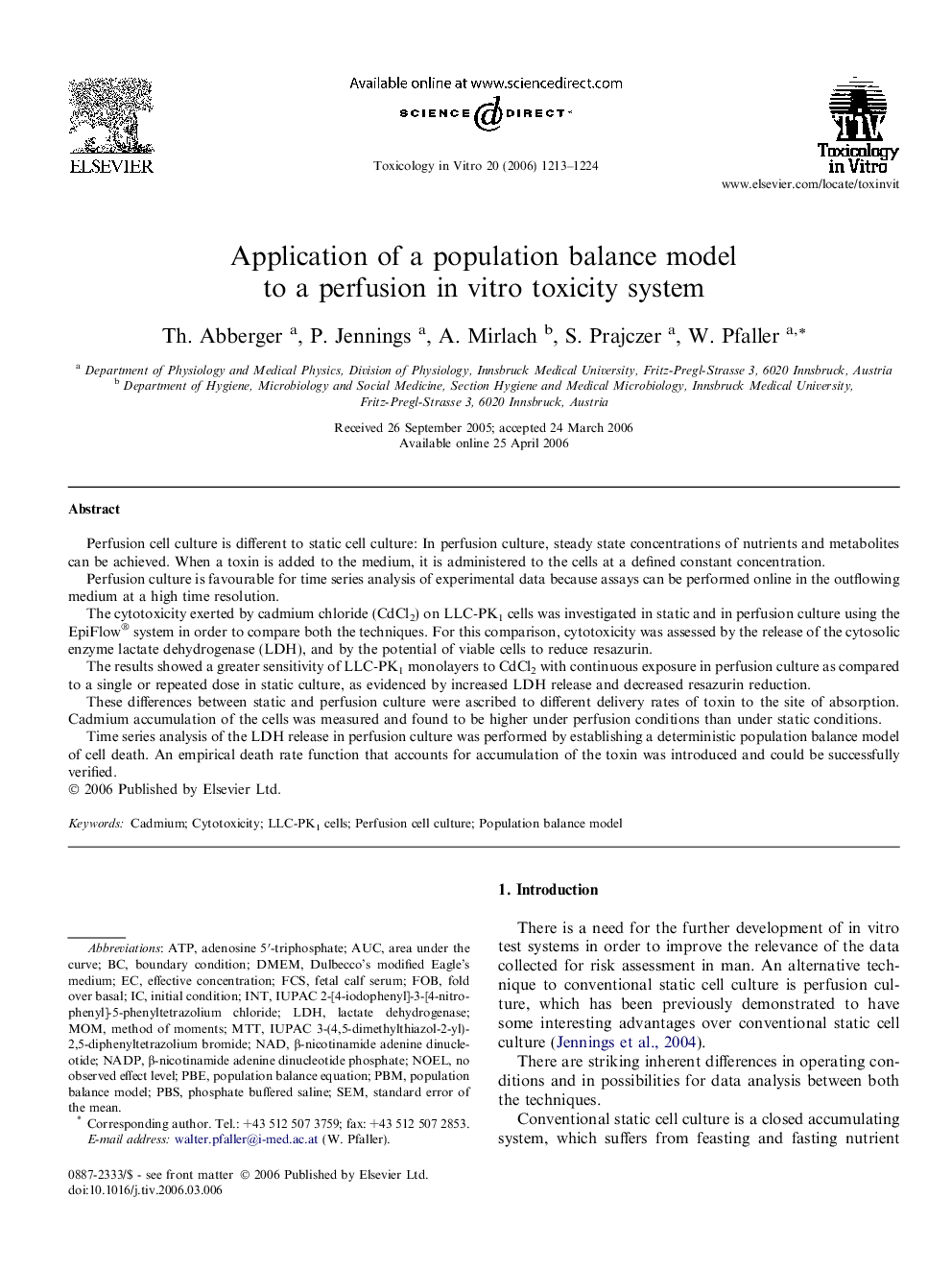| Article ID | Journal | Published Year | Pages | File Type |
|---|---|---|---|---|
| 2603980 | Toxicology in Vitro | 2006 | 12 Pages |
Perfusion cell culture is different to static cell culture: In perfusion culture, steady state concentrations of nutrients and metabolites can be achieved. When a toxin is added to the medium, it is administered to the cells at a defined constant concentration.Perfusion culture is favourable for time series analysis of experimental data because assays can be performed online in the outflowing medium at a high time resolution.The cytotoxicity exerted by cadmium chloride (CdCl2) on LLC-PK1 cells was investigated in static and in perfusion culture using the EpiFlow® system in order to compare both the techniques. For this comparison, cytotoxicity was assessed by the release of the cytosolic enzyme lactate dehydrogenase (LDH), and by the potential of viable cells to reduce resazurin.The results showed a greater sensitivity of LLC-PK1 monolayers to CdCl2 with continuous exposure in perfusion culture as compared to a single or repeated dose in static culture, as evidenced by increased LDH release and decreased resazurin reduction.These differences between static and perfusion culture were ascribed to different delivery rates of toxin to the site of absorption. Cadmium accumulation of the cells was measured and found to be higher under perfusion conditions than under static conditions.Time series analysis of the LDH release in perfusion culture was performed by establishing a deterministic population balance model of cell death. An empirical death rate function that accounts for accumulation of the toxin was introduced and could be successfully verified.
